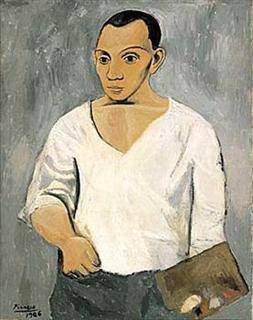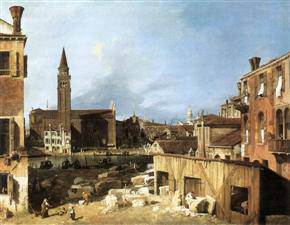
Pablo Picasso
Self-Portrait with a Palette. 1906
Philadelphia Museum of Art
© Heirs of Pablo Picasso
‘Picasso in Paris, 1900-1907’ in the Van Gogh Museum, Amsterdam An exhibition devoted to Pablo Ruiz y Picasso’s (1881-1973) spectacular artistic development in Paris, a dazzling cultural centre at the beginning of the 20th century, is being held in the Netherlands for the first time. 18 February – 29 May 2011]]>
Source: Van Gogh Museum, Amsterdam
With more than 70 works of art, including towering masterpieces such as the Self-portrait with a palette and Moulin de la Galette, Picasso in Paris, 1900-1907 outlines how in just a few years Picasso grew from an unknown young artist into the leading figure of the French avant-garde.
From his first Paris impressions to his breakthrough as an innovative artist
In Paris the young Picasso saw the art of Vincent van Gogh, Paul Gauguin and Henri de Toulouse-Lautrec for the first time. Initially, he experimented with new painting and graphic techniques and explored Paris themes, such as Montmartre’s nightlife, in scenes of cafes and women dancing. Later, his interest shifted to more serious and melancholy subjects, such as the circus, people in need and mothers and children.
While Picasso drew inspiration from many artists, he was never a mere imitator. He ingeniously adapted the discoveries made by his contemporaries and predecessors to create a style of his own. His development into a pioneering avant-garde artist is divided into four periods in this exhibition:
1. Picasso discovers Paris – A new world opened up for the 19-year-old Picasso when he became exposed to the work of Toulouse-Lautrec, Steinlen, Cézanne, Gauguin and Van Gogh. He experimented with new colours and techniques and painted subjects from modern Paris and Montmartre’s nightlife, including the flamboyant dancers and lively cafes.
2. Picasso as a Symbolist – Responding to the work of Gauguin and other Symbolists, Picasso adapted his style and painted destitute people and mothers and their children in the Saint Lazare prison. Picasso’s friend Carles Casagemas took his own life in 1901, marking the beginning of Picasso’s Blue Period, during which he produced works emanating a melancholy, sad atmosphere.
3. The life of the bohemians – In 1904 Picasso took over the atelier of the Spanish sculptor Paco Durrio in the Bateau Lavoir, a building in the heart of Montmartre where several artists resided. Picasso’s subject matter and palette changed yet again. His interaction with writers and poets, including Max Jacob and Guillaume Apollinaire, stimulated his interest in the circus and itinerant circus performers.
4. An innovative, modern style – Picasso’s atelier was a meeting place for artists, writers, collectors and art dealers, all attracted to the personality of the young and dynamic Picasso. He was inspired by the sculptures of Auguste Rodin, Durrio and Gauguin, which fuelled the development of his revolutionary modern style that would forever change the course of 20th-century art.
Stepping out in Montmartre. Prints of cafes and theatres
During this exhibition the Van Gogh Museum is also presenting Stepping out in Montmartre. Prints of cafes and theatres. Posters, prints, theatre programmes, books and paintings give an impression of the flourishing artistic climate in the district of Montmartre in Paris around 1900. The rural surroundings as well as the bustling nightlife there were portrayed by Van Gogh, Toulouse-Lautrec, Steinlen and Ibels, artists Picasso admired.
Follow us on:


